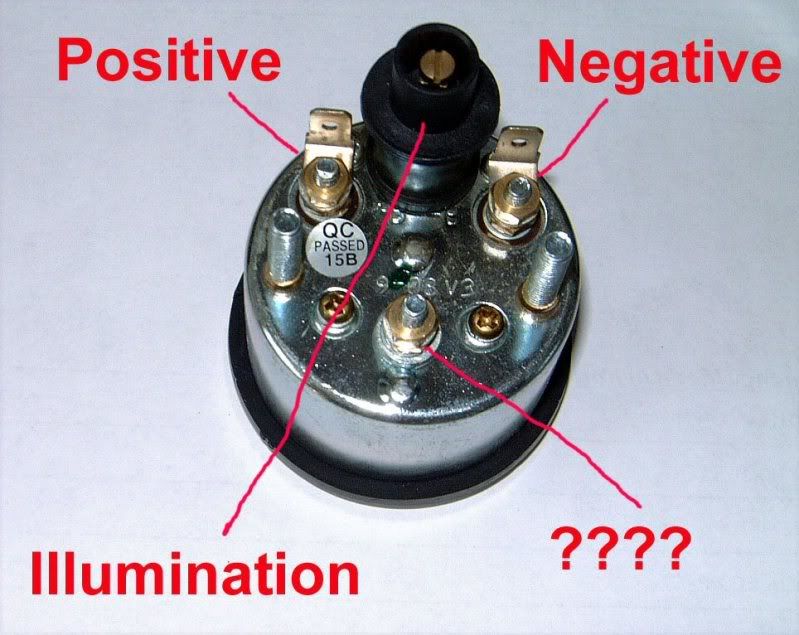RobertN
Super Member
Cool. Will look nice on the tractor, and give you the info you need. And, meets the KISS parameters(keeping it simple) 
Below is the gauge I ordered.

Below is the gauge I ordered.


Will Larry, the only way to know for sure what's going on is to put an O-scope across the battery and alternator output, set up a DVM and test the outcome with various size caps. I still think you'll need a full Farad cap to keep the volt meter steady. And so what if the voltage wiggles some, learn to accept a few thousandths up and down; the moon will not spin out of orbit. As for the meter being a constant drain on the battery, just wire it in on the on-off side of the key switch.

Ok, I have the gauge and I'm ready to do the install. It didn't come with installation instructions or wiring. Take a look at the picture and confirm the connections for me. Terminal "+B" is the positive connection, terminal "-B" is the negative connection. The large black terminal is for illumination. What is the lower middle terminal for (the one I have labeled "????").
Yes, it seems very basic, but the fuel level and engine temp gauges are the same style with no numbers on them, just red and green zones.

WOW. Nice clean looking tractor! Any chance of seeing a picture of the whole rig?
Have to agree with your choice of guages. Any other just wouldn't look right.


The gauge lights only come on when the headlight switch is turned on. I'll check the other gauges on the tractor and see if they have similar connections for the illumination (IIRC they do).
It's a clean tractor that has had a repaint. I've done little things like a new steering wheel, muffler, cowl-mounted tool box, shifter knobs, added a pre-filter, and replaced the power steering control valve. It needs new power steering cylinders/hoses and that's about it.
Very nice looking tractor. Any idea what year it is? ...and is that 21.7 hours on the meter correct?

I'm going to use the stock analog voltmeter gauge from Massey Ferguson, nothing fancy like digital or voice announcing.
It matches the other factory gauges on the tractor for that year model.
I want to add an oil pressure gauge also. I just don't like dummy lights keeping me informed of volts and oil pressure.